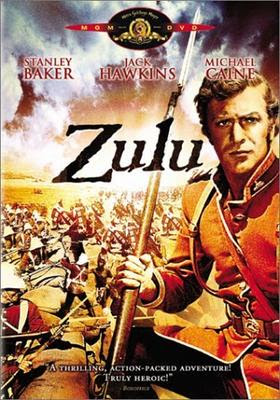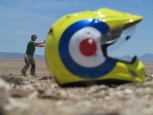
Day Seventeen – The Battle of Isandlwana
Blog — By Buspass on October 9, 2012 2:09 pmIn the year of 1879 the Zulus had never killed a Brit, lived on fairly worthless land and had no inclination to fight the British. But the ruling Brits at that time had been granted an excessive amount of autonomy by Queen Victoria’s government and were spoiling for a fight. So they handed out an ultimatum to the ruling Zulu Chief Cetawayo with which it was impossible to comply. This included disbanding entirely the Zulu army and stopping the tradition, intiated by Shaka, of not being allowed to marry before wetting your assegai stabbing spear ie before killing an enemy and wetting it with his blood.
So in January 1879 Lord Chelmsford led his troops out of Natal across the Buffalo River into Zululand. He was arrogant and did not believe the Zulus would fight. He set up camp beneath the famous rock, called Isandlwana, that looks like a sphinx on a large open plain. They were 4800 men. A day later believing the main Zulu army was in a valley 12 miles away to the SE , Chelmsford took the majority of the troops in pursuit leaving 1700 at the camp. They did not laager the wagons or build trenches and left a novice Lieutenant Colonel Pullein in charge. He positioned the troops poorly, failed to strike the tents which caused chaos and was actually killed in his tent. Chelmsford had been deceived and the main Zulu army attacked the camp on the 22nd killing 1357 men, each of which was disembowled. 3000 Zulus were killed. Only 55 white soldiers survived and these were all on horseback. The Zulus ran down all on foot.
The first 2 posthumous VCs ever were awarded in this battle to Melville and Coghill who tried to save the Colours.
This afternoon the second act Rorkes Drift.












Your Latest Messages Leave a message
"I know it is a bit late as we have been away for the last couple of days but we could not let the D100 pass without a very sincere congratulatory message - what a fantastic achievement! Best of luck to you all with your re-entry to "normal life" Bill & Joanne"
Bill Madden
"Fantastic!!! Well done to you all-so sorry the blogs are coming to an end,they have made compelling reading for the last 98 days.Happy New Year to you all and a safe journey back to a soggy UK Regards John and Claire P.S. would make a super book,film or documentary!! Will make Richard Dimblebys documentary starting next Wednesday look pretty tame I suspect!"
John and Claire
"So nice to have met all of you and served you at dinner."
Victoria Hofman
"You must be almost there - day 98?. Hope you have a fabulous last couple of days. Lots of depressing rain in the UK but plenty of lovely snow in Courchevel! Louise and Crispin xx"
Louise and Crispin Aylett
"Been thinking about the team all day. Did you make it to Capetown? Can't wait to hear all the stories......sad the blog is coming to an end :( Merry Christmas A100. Imelda"
I elf
Read more or leave a message ...